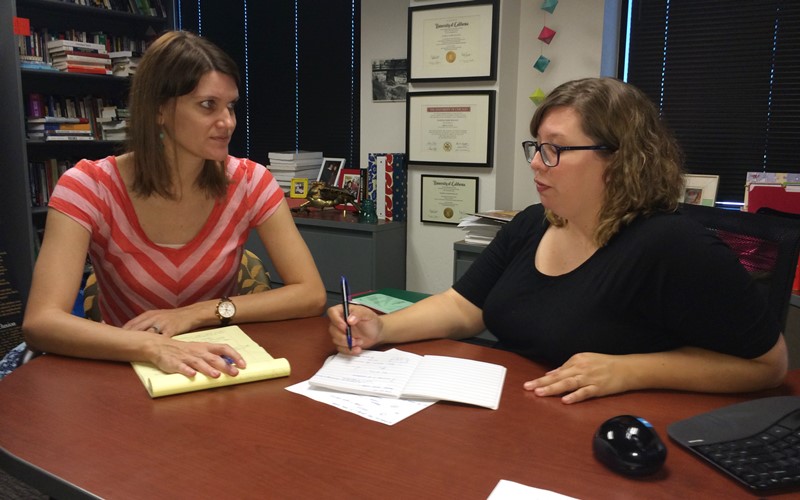Chamberlain and Wallace examine why some parolees fail after release from prison

ASU criminology and criminal justice professors Alyssa Chamberlain and Danielle Wallace wanted to find out how the release of large numbers of parolees in a concentrated area affected their chances of returning to prison.
To do this, they examined data from three Ohio cities, Columbus, Cincinnati and Cleveland, from 2000 to 2009. They found that the greater the number of former inmates in a disadvantaged neighorhood, the more likely they were to commit new crimes. Data analysis also showed that those released in less disadvantaged neighborhoods and in lesser concentrations faired better. The study will be published in a forthcoming edition of the journal Justice Quarterly.
Their research was the focus of discussion on Cleveland radio station WCPN. Tony Ganzer, a afternoon host on the NPR station, interviewed Chamberlain about the study.
“They’re going to these disadvantaged neighborhoods," Chamberlain told WCPN News. "And when they return to neighborhoods that also have these high populations of parolees, the already limited resources that exist in these neighborhoods are just stretched too thin. They can’t accommodate these large populations.”
Chamberlain explained that valued neighborhood resources include housing, jobs and programs that can help keep parolees out of trouble.
"Simple things like finding a job, finding a place to live, getting help for drug problems, for alcoholism, these factors can help turn the tide in the favor of the parolee and keep them on the up-and-up,” Chamberlain said.
The conversation didn't end with Chamerlain's interview. The WCPN News host also interviewed the director of a community re-entry program and a former parolee who works as a community facilitator at a Cleveland mens shelter.
You can listen to the conversation or read the transcript here.